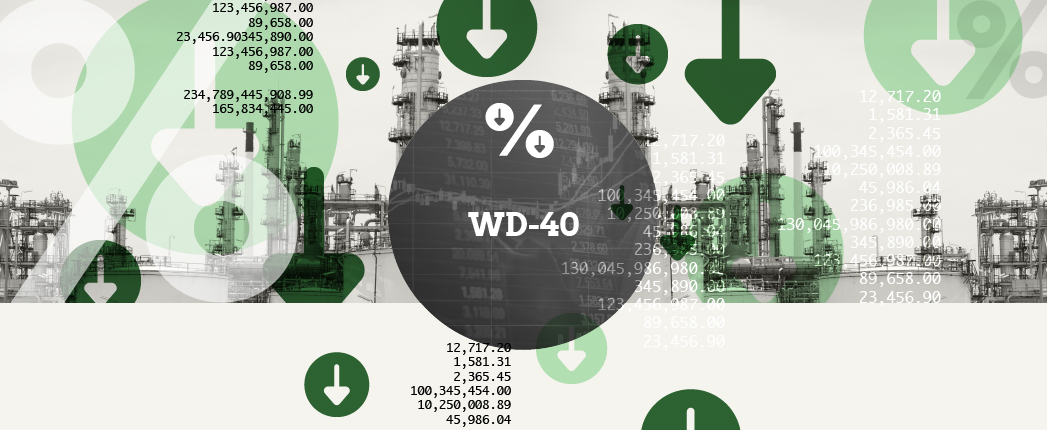
WD-40 Co. posted a 15% drop in net income for its quarter ended Feb. 28, while Argentina’s YPF reported a 7% dip in sales revenue for 2022 for its lubricants and specialties business unit.
WD-40 said its performance was hurt by reduced sales in Europe, the Middle East and Africa and in the Asia-Pacific region. YPF blamed its setback on the war in Ukraine, which disrupted international trade in raw materials, leading to a decrease in exports to other South American countries.
WD-40
WD-40, the Budd Lake, New Jersey-based marketer of the spray lubricant carrying the same name, recorded net income of $16.5 million for its second quarter, compared to $19.5 million for the same period of 2022.
Maintenance products, including WD-40 lubricants, accounted for 93% of the company’s net sales for the quarter, $122.1 million, which was up from $121.9 million in the second quarter a year earlier.
“In the second fiscal quarter, while we saw double-digit sales growth in our Americas segment which has already moved through price-increase related disruptions,” WD-40 President and CEO Steve Brass said. “Our [Europe, Middle East and Africa] and Asia-Pacific segments reported sales that were softer than we would like to see. The disruptions we have been experiencing in EMEA are due primarily to recent price-increase actions coupled with our loss of sales in Russia and Belarus.
“In our Asia-Pacific segment, we experienced some weaker economic conditions and pricing disruptions in our distributor markets. However, we are expecting a strong comeback in both EMEA and Asia-Pacific in the second half of the fiscal year.”
Overall net sales, which includes homecare and cleaning products, stayed barely above results in the same period last year, with $130.2 million, compared to just under $130 million.
The companies Americas segment, which accounts for almost half of its net sales, increased sales by 15% for the quarter due to higher sales of maintenance products in the United States, driven by increased production capacity and improved availability of certain products. In Canada, sales increased 10%. Latin America saw a 3% bump, mostly due to higher sales in Mexico.
Net sales in EMEA, which accounts for 36% of the company’s net sales, dropped 13% primarily due to changes in foreign currency exchange rates. Direct sales were unfavorably impacted by a lower level of customer orders, the company said, and lower sales in the distributor markets were attributable to a suspension of sales in Russia and Belarus starting in March last year.
Asia-Pacific, which accounted for 16% of the company’s net sales, posted a 4% decline, mostly due to lower sales of maintenance products in distributor markets, due to unfavorable economic conditions and distributors purchasing products ahead of price increases last December. That lowered sales in Taiwan, Korea, Thailand and Malaysia. Sales in China remained stable, while sales in Australia rose 6% due to price increases. Changes in foreign currency exchange rates hurt the entire market, as on a constant currency basis the segment would have only dropped 1%.
YPF
YPF, in which the Argentine government owns a majority stake, does not report monetary results for its lubricants and specialties business unit. It said the 7% drop in the units sales revenue was due largely to a 43% drop in export sales.
The Buenos Aires-based energy company said the drop in exports was mostly caused by the fighting in Ukraine, which interrupted supply of raw materials. Most of the company’s exports go to other parts of South America. Volumes shipped to YPF’s subsidiary in Brazil dropped most sharply, but exports to Chile, Bolivia, Uruguay and Paraguay also fell.
The company did state that sales volumes by its subsidiary in Brazil shrank 37% to 28.2 million cubic meters (4.5 million metric tons), while volumes sold by the company’s subsidiary in Chile decreased 21% to 11.7 million cubic meters.
YPF claims to be the largest finished lubricant supplier in Argentina. It said the company’s share of that market dipped by 0.4 percentage points in 2022 to 36.2%.
Base oil production at the YPF’s refinery in La Plata sank from 1.2 million barrels in 2021 to 800,000 barrels in 2022. The company blamed the decrease on a scheduled maintenance shutdown during 2022.
Base oils and by-products from the base oil plant brought sales revenue of U.S. $608 million in 2022, up from $531 million in 2021.